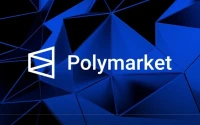Anatomy of a 130% Rally: Was Adrena's September Surge Built to Last?
---
A 130% gain in a single month is the kind of performance that gets attention. For Adrena (ADX), a decentralized perpetuals exchange on Solana, September was a banner month. The price charts painted a picture of explosive growth, and the social media chatter followed suit, touting a project hitting its stride within a resurgent Solana ecosystem.
On the surface, the story is clean. Adrena offers a compelling product: a decentralized, permissionless trading platform with zero slippage, built on a peer-to-pool model. It promises to redistribute 100% of its revenue back to users and stakers. When a project with a solid value proposition sees its token price spike, the default assumption is that the market is finally recognizing its fundamental worth.
But markets are rarely that simple. A price rally isn't just a verdict on utility; it's a complex interplay of fundamentals, narrative, and mechanics. My analysis of Adrena’s September performance suggests that while the protocol itself may have merits, the rally was less a story of organic adoption and more a textbook case of narrative engineering and manufactured scarcity. Let's deconstruct the numbers.
The Anatomy of the Rally
The price action for ADX in September can be cleanly divided into three distinct phases. The first two weeks were a period of quiet consolidation. From September 1st to the 13th, the token traded within a narrow range, hovering around the $0.022 mark and even dipping to a low of $0.0209. Daily volume was negligible, typically between $20,000 and $60,000. This was the calm before the storm.
The build-up began mid-month. From September 14th to the 24th, ADX began a steady climb, rising from $0.0214 to $0.0306—a 43% increase. Volume ticked up, and key resistance levels were broken. This was the priming phase, where momentum began to build, likely attracting the attention of technical traders and those scanning for early signs of a breakout.
Then came the final week. From September 25th to the 29th, the rally went parabolic. The price shot up from $0.0273 to a peak of $0.0355, a rapid 30% jump in just a few days. Trading volume exploded, hitting over $114,000 on September 25th alone. Imagine the screen of a trader who had been accumulating quietly for weeks, suddenly watching that green candle stretch vertically. This final, frantic leg accounted for the bulk of the month's gains.

So, what lit the fuse? The project’s timeline provides a clear sequence of events. On September 25th, Adrena launched a $50,000 trading raffle to celebrate its first anniversary. One day later, a teaser promised "4 things coming soon," sparking speculation. The next day, September 27th, a $1 million liquidity mining program was launched on Meteora, offering stakers an attractive APR (up to 43%). Each event, on its own, is standard marketing fare. But their rapid-fire succession looks less like a coincidence and more like a coordinated campaign.
Scarcity, Not Utility, as the Primary Driver
The real catalyst, however, appears to have been deployed on September 29th. A report circulated revealing that only 9.4% of the ADX token supply was truly liquid, a key point analyzed in a subsequent Adrena ADX Rallied 130% Percent In September, A Deep Dive. According to the data, 76.5% of the circulating supply was staked, with much of it locked for an extended period (reportedly 540 days). This single data point reframes the entire rally.
A low-float token is like a small, shallow pond. A single stone—a marketing push, a modest increase in buying pressure—can create massive, dramatic ripples across the entire surface. In contrast, a high-float asset like Bitcoin is a vast ocean; the same stone would disappear with barely a splash. The announcement of this extreme scarcity, coming at the peak of a marketing-fueled hype cycle, was the perfect ingredient to trigger FOMO.
I've analyzed hundreds of token launches and marketing campaigns, and this sequence of events is a classic playbook. It's highly effective, but it raises serious questions about the organic nature of the demand. The Nansen data from the period offers some support, showing exchange reserves dropping by about 3% while top whale wallets increased their holdings by a modest 0.87%. These numbers are directionally consistent with accumulation, but they aren't dramatic enough on their own to explain a 130% price surge. They are supporting actors in a story where the main character is supply-side scarcity.
The liquidity mining program was a particularly clever piece of this puzzle. By incentivizing users to stake their ADX in Meteora pools, the protocol was actively encouraging the market to reduce its own liquid supply, amplifying the scarcity effect just as the narrative was taking hold. It was a self-reinforcing mechanism.
This isn't to say the Adrena protocol lacks merit. DefiLlama data shows its perpetuals volume recovered to over $600 million for the month, and it ranked second in daily trading fees among Solana derivatives DEXs. These are signals of a functioning, revenue-generating product. The discrepancy lies in the timing and magnitude of the price action. The rally seems disproportionately correlated with the supply-squeeze narrative rather than a sudden, explosive growth in platform usage. The question isn't whether Adrena is a real project; it's whether the September valuation was a true reflection of its fundamentals or a temporary distortion caused by a masterfully executed campaign.
A Masterclass in Narrative Engineering
Ultimately, Adrena’s September rally looks less like a spontaneous market awakening and more like a brilliantly executed squeeze play. The combination of a multi-pronged marketing push, incentivized liquidity removal, and a perfectly timed reveal of extreme token scarcity created a perfect storm for a price explosion. The underlying protocol is generating real fees, which is more than can be said for many projects. But the price action was driven by something else entirely. It was a masterclass in narrative engineering.
The real test is yet to come. What happens when the marketing buzz fades? More importantly, what happens when those staking locks—some lasting into 2026—begin to expire and that 76.5% of staked supply starts to become liquid again? Can the protocol's fundamental growth in users and volume outpace the inevitable increase in sell pressure? That's the billion-dollar question the September price chart doesn't answer.









